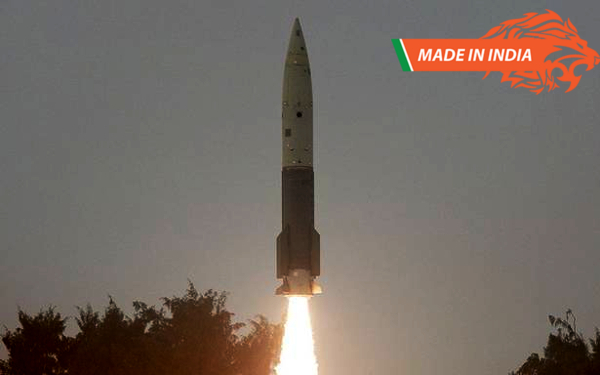India on Thursday successfully tested the locally developed surface-to-surface missile Pralay, the second test of the conventional missile in two days, the defence ministry announced.
The Defence Research and Development Organisation (DRDO) tested the missile from Dr APJ Abdul Kalam Island off the Odisha coast. It has a range of 150 to 500 kilometre, depending on payload, and can be launched from a mobile launcher.
“In Thursday’s launch, the missile was tested for heavier payload and different range to prove the precision and lethality of the weapon,” the ministry said in a statement.
The launch was monitored by range sensors and instruments, including telemetry, radar and electro-optic tracking systems deployed along India’s eastern coast and ships positioned near the impact point.
The flight test met all the mission objectives, the ministry said.
The twin flight tests came days after India tested an advanced variant of the Agni class of missiles from the Dr APJ Abdul Kalam Island test facility on December 18.
The new generation nuclear-capable ballistic missile, named Agni P, can strike targets at a maximum range of 2,000 km and will further strengthen India’s credible deterrence capabilities, as previously reported.
It is a canisterised missile with a range between 1,000 and 2,000 km.
The other variants of the Agni missiles developed by DRDO include the 700-km Pakistan-specific Agni-I, the 2,000-km range Agni-II, the 3,000-km range Agni-III, 4,000-km range Agni-IV and the 5,000-km range Agni-V missile.
The Agni P test came a week after India successfully tested a new locally-developed anti-tank missile and concluded a series of tests of extended range rockets also developed indigenously, weapons that will be inducted into the armed forces shortly.
The weapons successfully tested on December 11 were the helicopter launched stand-off anti-tank (SANT) missile and Pinaka extended range (ER) rocket systems.
SANT has a range of 10 km.
The new Pinaka rocket system has longer range with reduced length compared to the earlier variant. While Pinaka Mk-1 rockets have a range of 36 km, the ER variant can hit targets more than 48 km away and has been developed as per the requirements of the Indian Army.
You may also like
-
IAF Aircraft Set Course For Exercise Eastern Bridge VII At Oman
-
IAF Set To Host The Indian Defence Aviation Exposition-II At Jodhpur
-
Defence Secretary to co-chair 5th India-Philippines Joint Defence Cooperation Committee meeting in Manila
-
Simultaneous Launch Of ‘malpe And Mulki’, Fourth And Fifth Ships Of Asw Swc (Csl) Project
-
Aatmanirbharta in Defence: MoD signs Contract with HAL for 240 AL-31FP Aero Engines for Su-30MKI Aircraft
